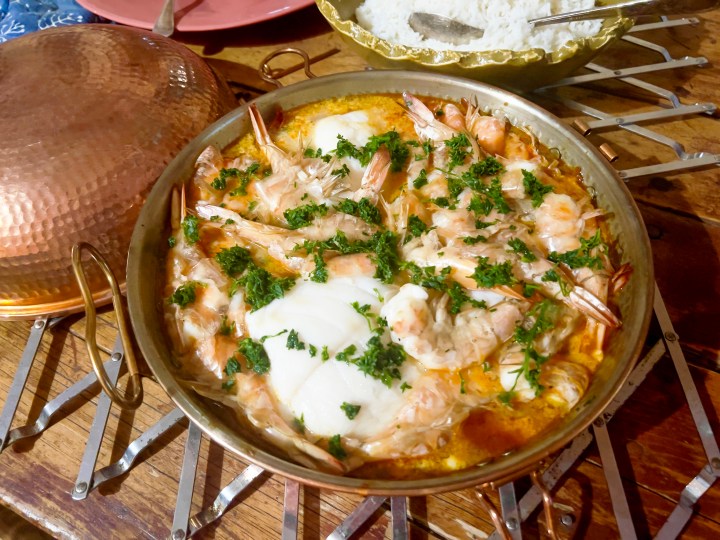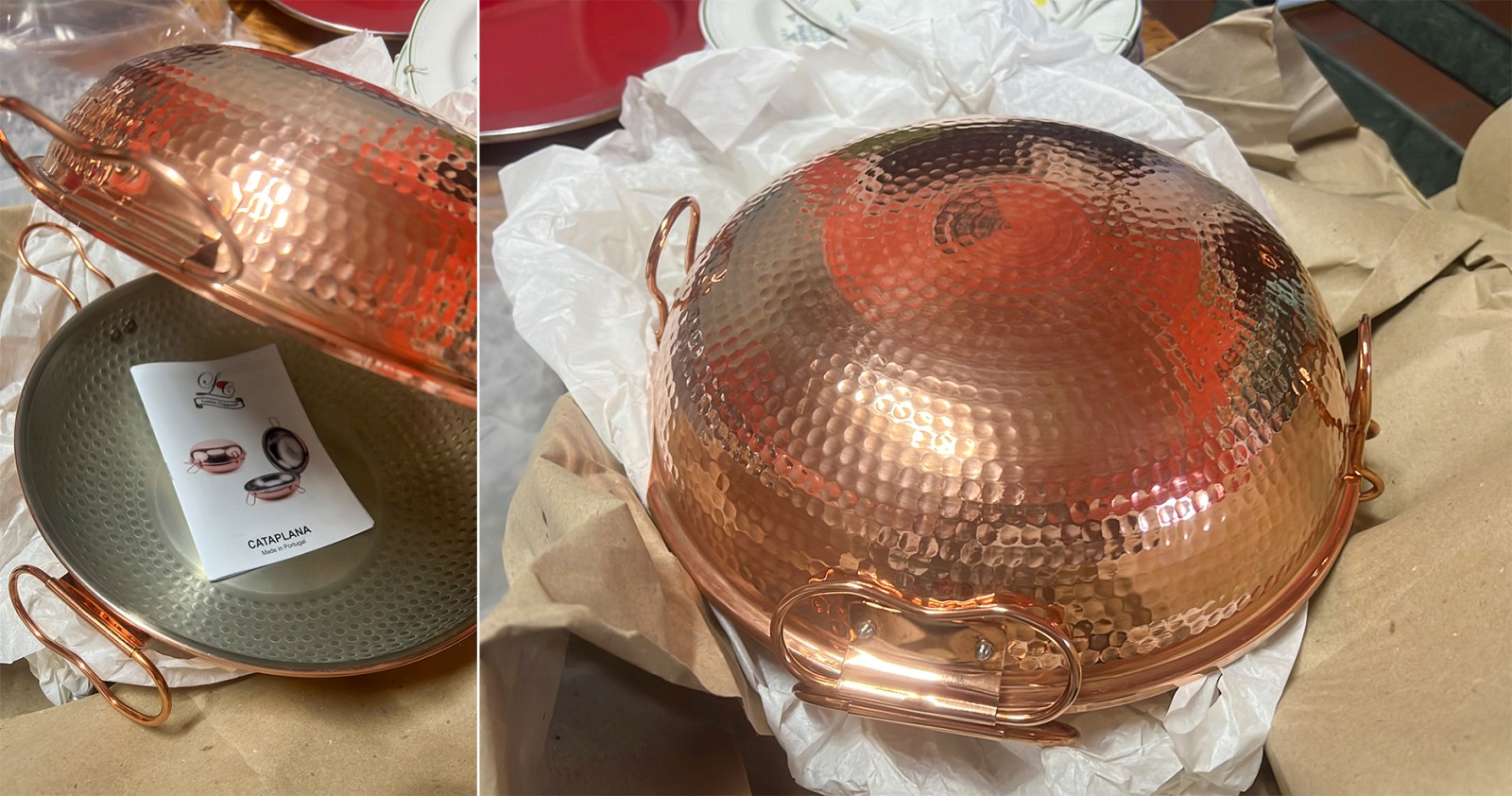COPPER BEAUTY
Throwback Thursday: Seafood cataplana — made in a cataplana

A dear friend in Portugal sent me an early birthday present by courier. It is a cataplana, a clam-like cooking vessel from the Algarve region that hugs the Atlantic. That evening, I made a seafood stew in it. In Portugal, the stew itself is also called a cataplana.
The Algarve is on the Atlantic coast of Portugal, though its climate is Mediterranean, just like the Cape of Good Hope. A cooking vessel now called a cataplana was introduced to the area by the Bedouin Moors in the 8th century and it remains a prized vessel to this day.
Its design is based on a clam, both its shape and how it “clams” shut so thoroughly, and this is key to its use, because by “clamming” it shut, all the vapours remain inside while what you have put inside it is cooking.
It is a thing of great beauty, made of beaten copper outside and a lining of tin inside. (Some are made of aluminium.) It’s just marvellous, and when you cook seafood in it the food is done amazingly quickly.

Unwrapping my cataplana. Thank you, Frances. (Photo collage: Tony Jackman)
The top and bottom halves of a cataplana are both concave (or convex depending on which way it is facing, up or down) and of equal size. One half is clearly the top, as the lower half has a flattened base. It has three clamps and one hinge, with a copper pin that you feed through the hinge once you have clamped it shut.
It is considered to be an ancestor of the modern-day pressure cooker, and you have to handle it carefully because it becomes frighteningly hot and you could burn yourself badly, quickly. But handle it with oven gloves and you’ll be fine.
You can cook foods other than seafood in it, such as rabbit (ie, ingredients that can be cooked quickly), but seafood is the tradition with a cataplana.
To make the recipe below, you’ll need some Lisbon paste, better known in Portugal as massa de pimentão, which you can whip up yourself. It is utterly delicious and you’ll make it again and again. Here’s how, and in an air fryer to boot. Make the paste ahead of time, so that it is to hand when you first use your cataplana. (Google cataplana, you can buy one online.)
(Serves 4)
Ingredients
For the crustacean stock:
Heads, shells and other offcuts of the prawns
1 medium onion, roughly chopped
1 clove garlic, bashed and chopped roughly
2 bay leaves
1 x 400g can chopped tomatoes
200ml dry white wine mixed with ½ tsp saffron threads
1 star anise
For the cataplana:
½ cup extra virgin olive oil
3 shallots, sliced finely (or 1 medium white onion)
2 cloves garlic, finely chopped
1 cup Lisbon paste (find the recipe here)
400g calamari strips
12 tiger prawns, heads removed but retained
1 side of sustainable line-caught kingklip (check the Sassi rules) cut into four portions (1 per serving)
2 Tbsp chopped flat-leaf parsley
2 cups crustacean stock
Salt and white pepper to taste
Method
To make the stock:
Put all ingredients in a suitable pot, add 4 cups (1 litre) of water, and bring to a boil. Reduce to a simmer and cook until half of the liquid has evaporated or there are 2 cups of stock when strained through a fine sieve. Discard all other ingredients.
For the prawn, calamari and kingklip cataplana:
Remove the prawn heads, snip off extraneous goods and remove the veins. Keep all the offcuts. Use them to make the stock recipe above.
Put the cataplana on the hob and add a good splash of extra virgin olive oil. Put the heat on fairly low, add the shallots and garlic and sauté for a minute or two.
Add the Lisbon paste and cook for 2 minutes while stirring.
Add the calamari strips, then the prawns, and place the kingklip portions on top.
Season with salt and white pepper.
Pour the stock over to cover the contents of the cataplana. Sprinkle half of the parsley on top.
Clamp the lid on, push the pin through the hinge bracket, and bring the contents to a simmer. Check the level of heat by listening for a gentle bubble, rather than a violent one.
Cook for 4 to 5 minutes, by which time the seafood within should be cooked through. Serve with rice, garnished with chopped parsley. DM
Tony Jackman is Galliova Food Writer 2023, jointly with TGIFood columnist Anna Trapido. Order his book, foodSTUFF, here
Follow Tony Jackman on Instagram @tony_jackman_cooks.





Comments - Please login in order to comment.